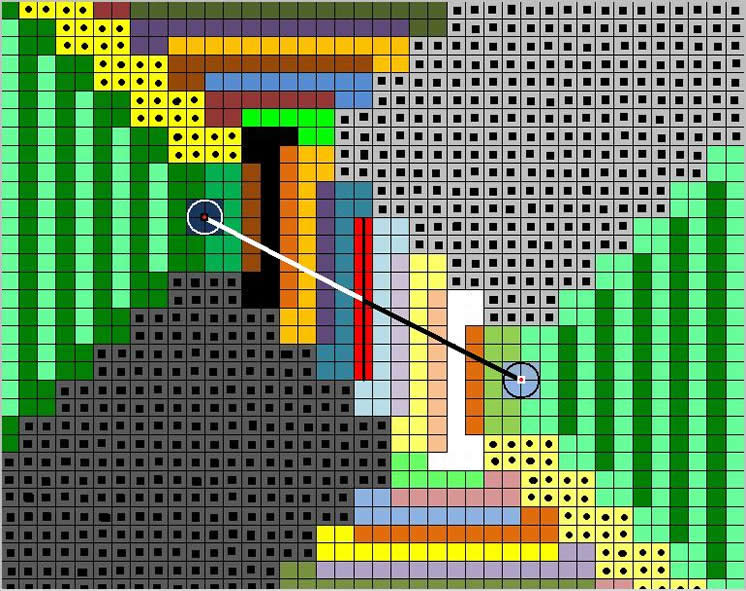Animal Migration: A Legacy of Earth’s Ancient Wounds
Instincts Woven Through Time
Every year, a breathtaking spectacle unfolds across the globe: caribou trek northward across vast tundras,
birds soar southward in elegant formations, and whales glide through endless oceans. These creatures follow
invisible pathways, etched deep within their instincts, on journeys that span generations and continents.
These migrations are not mere wanderings—they are essential to survival, executed with astonishing precision
and timing. But what fuels these epic voyages? How do animals navigate distant destinations so flawlessly?
Scientists often point to familiar tools of navigation: instincts honed by evolution, the Sun and stars as celes-
tial guides, the Moon’s subtle pull, recognizable landmarks, remembered scents, magnetite particles in their
bodies, or even Earth’s magnetic field. While these explanations hold truth, they feel incomplete—like pieces
of a puzzle that don’t quite snap together. Could there be a deeper, more extraordinary force at play?
A Quantum Connection
What if the answer lies in the mysterious realm of quantum physics—specifically, quantum entanglement?
This phenomenon describes a profound link between particles, like photons (tiny packets of light), where
two entities can exist in opposing states yet remain instantly connected, no matter the distance. When
something affects one particle, the other responds in perfect sync—faster than light itself, as if time and
space dissolve in the moment of "now."
Particles, at their core, are condensed packets of information: numbers, geometric shapes, and measurements.
They are the tangible expressions of energy, bridging the visible, physical world with the unseen waves of rea-
lity. Could this interplay of particles and energy hold the key to animal migration? I believe it might. Whether
it’s a fish darting through currents, a turtle plodding across beaches, a mammal roaming plains, an insect buzzing
through forests, or a bird slicing through the sky, each seems tethered to an invisible cord—a lifeline of intuition
we humans also possess but rarely tap into.
The Lost Sense of Direction
Modern humans rely on mechanical tools—compasses, GPS, maps—to stay on course. Yet, some "primitive" peo-
ples, living simply in harmony with the land, still navigate using an innate sense, unburdened by gadgets or even
visual cues from their surroundings. Animals, meanwhile, never lost this gift. Why have we? Perhaps our focus on
the external, physical world has dulled our inner compass, leaving us disconnected from a universal force that
guides all life.
Take a young shorebird, for instance, embarking on its first migration. Hatched on the Arctic coast, it will fly
alone to a precise coastal stretch in Nova Scotia, with no guiding flock—its parents departed weeks earlier.
How does it know the way? I imagine it sees a mental runway, an invisible ribbon of light stretching toward its
destination. This "pathway" remains constant, whether the bird lingers or hurries, tugging at its instincts like
an elastic band. The longer it delays, the stronger the pull grows, urging it onward.
A Pathway of Light

Picture this runway as a black-and-white line cutting through a wall of small black squares—an opening to freedom.
The bird flies toward a point of light in its mind’s eye, a beacon at the center of a red line where black and white
converge. This central point isn’t just a destination; it’s the origin of the directive itself, a command pulsing from
the heart of the journey.
As the bird nears its goal, the runway narrows, the black and white lines merging into a single point of arrival.
The Ripple of Awareness
This idea of an unseen connection isn’t limited to animals. Consider a surveillance operation: seasoned observers
know not to stare at their target, even from behind. Why? The watched often sense it—a restlessness stirs, and
they glance around. Traditionally, we might say the observer (A) sends signals—particles—to the observed (B),
which bounce back to (A). But what if it’s not a simple back-and-forth?
Imagine instead a central source, like a pebble dropped into a pond, sending ripples outward in all directions.
These waves reach both sides simultaneously, carrying information faster than we can fathom—10,000 times the
speed of light, perhaps instantaneous, piercing vacuums and solids alike. The moment a thought or impulse emer-
ges from this center, both observer and observed share the same awareness. No delay, no distance—just unity.
The Cost of Ignoring the Call
For a migrating bird, this central command might manifest as an urge: Fly south now. It could ignore the impulse,
but the pull persists, a quiet insistence woven into its being. If it delays too long, defying this instinctual direc-
tive, the consequences are stark—freezing or starving in a land unprepared for its lingering presence. The cen-
ter’s call is not a suggestion; it’s a lifeline.
A Legacy Beyond Instinct
Animal migration, then, may be more than a marvel of biology. It could be a legacy of Earth’s ancient wounds—
cracks in reality where energy and matter entwined, forging connections that endure across time. Quantum
entanglement might just be the thread, stitching life to an unseen tapestry, guiding creatures along paths we’re
only beginning to comprehend. And perhaps, if we quiet our minds and look inward, we’ll rediscover that same
thread within ourselves.
